The history of the San Diego Padres: Volume 1 (1969-1973)
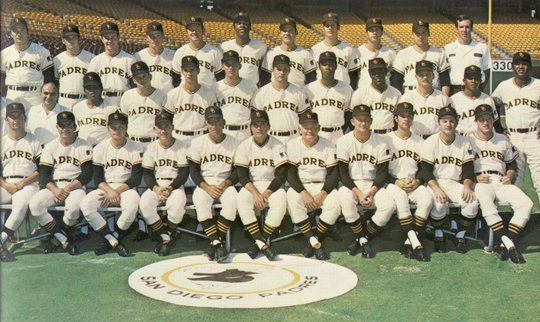
The 1969 San Diego Padres
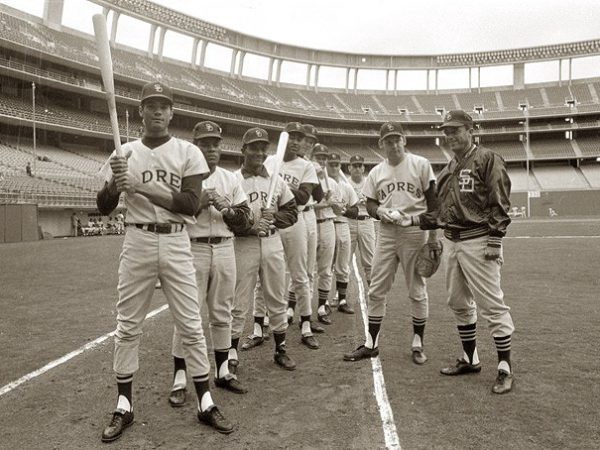
A history of the San Diego Padres starting with the 1969 season through the 1973 season.
In the 53-year existence of the San Diego Padres, sadly, there is little to celebrate.
Two National League championships are something to be proud of, but the franchise endured many losing seasons.
Despite that fact, there is much to recognize when it comes to the Padres and their baseball club in the city of San Diego.
The Padres franchise started existence in 1936 as a Pacific Coast League team. Owner Bill Lane, a one-time miner, brought his Hollywood Stars franchise south to San Diego as he did not want to pay the annual $25,000 rent for the use of Wrigley Field in Los Angeles. Lane financed the stadium through Works Progress Administration funds, and the 9,100 seat stadium was built right next to the Bay and along the Pacific Coast Highway. The Padres name was selected after a newspaper contest in which Don Blackwell, a San Diego resident, submitted the winning name.
The PCL Padres rostered several future major leaguers as Vince DiMaggio, Bobby Doerr, and George Myatt all played for the team. The most famous PCL Padres player was Ted Williams, who batted .293 and smacked 23 homers as a teenage talent in 1937. Sadly, owner Bill Lane suffered a heart attack and passed away in 1938. The team stayed in his estate for the next six years until the team was sold to Bill Starr (a former player) in 1956. Later in the year, Starr sold the team to C. Arnholdt Smith, head of the U.S National Bank, for $350,000.
In 1958, due to the dilapidated conditions of Lane Field, the Padres left the stadium by the bay. The wooden bleachers were unrepairable and unacceptable for the future of the franchise. The mostly wooden structure did not age well next to the Pacific Ocean. Smith moved his franchise to the Mission Valley area as he built a new stadium in the area named Westgate Park. The stadium was named after the businessman’s Westgate-California Tuna Packing Company. The 8,200 seat baseball park hosted its first game on April 29, 1958.
In 1965, hoping to lure professional sports to the area, the San Diego city council approved plans for a 50,000-seat stadium in Mission Valley for $27.5 million. Seventy-two percent of voters approved construction, and the rest is history. Westgate Park was eventually demolished to make room for Fashion Valley Mall.
On May 27, 1968, Major League Baseball awarded two new franchises in Montreal and San Diego.
The San Diego Padres would begin to play for the 1969 season. It was an exciting time for the city of San Diego.
1969
52-110 (6th place)
Manager- Preston Gomez
All-Star- Chris Cannizaro (C)
The inaugural season provided many challenges for the San Diego Padres. Free agency was not like it is in the modern era of the game. A new franchise was destined to fail in the long run with little hope for a quick fix. The Padres, in 1969, were about to begin a six-year run in which the team finished dead-last in their division and averaged 101 losses. It was a dark time for the franchise, but there was Major League Baseball in America’s Finest City, which was something to be proud of for San Diegans.
Marketing the team proved to be difficult for the team in its infancy. The city of San Diego has geographical limitations that make cultivating a fan base challenging. The Los Angeles Dodgers dominated the area before the arrival of the Padres in MLB. With the border to the South, the desert to the east, and the ocean to the west, the Padres would need to get creative to build a following.
In October of 1968, the Padres and Expos held their expansion draft. “Downtown” Ollie Brown was the first pick for San Diego. The outfielder came to the Padres from the Giants, where he was considered a decent prospect. Pitcher Dave Gusti of the Cardinals was the next selection for Buzzie Bavasi and his staff. Al Santorini, Dick Selma, and Jose Arcia rounded out the team’s top five picks in the draft. The Padres also selected Fred Kendall from the Reds, Clay Kirby from the Cardinals, and Nate Colbert from the Astros in the draft. The Padres chose a total of 30 men as Clarence “Cito” Gaston was the team’s 30th pick in the draft. The team decided to draft a bunch of young talent instead of selecting elder, more established veteran-type players. “We drafted a lot of babies, and it will take time for them to develop,” Buzzie Bavasi proclaimed to the local media.
Preston Gomez was placed in charge of the Padres. He admitted that the team had a long way to go because of the youth on the roster, but the manager predicted the club to win 60 games. Before the start of the season, the Padres dealt for veterans Ed Spiezio, Tommie Sisk, and Chris Cannizzaro to bolster the roster. In addition, longtime pitcher Johnny Podres came out of retirement, joining the team at the age of 36. The staff would consist of Podres, Dick Kelley, Dick Selma, and Al McBean.
After their first season in Yuma at the state-of-the-art baseball facility, Keegan Field, the year started with a win on April 8, 1969. The Padres defeated the Astros by a score of 2-1 before 23,370 fans at San Diego Stadium. Ollie Brown drove in a run late for the win, and Ed Spiezio homered for the first round-tripper in franchise history. Dick Selma struck out 12 Astros in the complete-game win. Two days later, the Padres shut out the Astros 2-0 and swept Houston in the team’s first series ever.
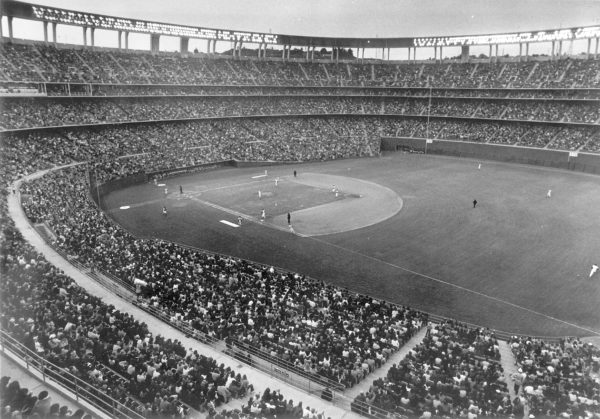
The team got off to a 24-30 start to the year but went 7-22 in June, losing 11 straight games from June 17-25. The season was full of peaks and valleys for the team. By July 13, the Padres were 31-61 and were last in the division. Catcher Chris Cannizzaro became the first Padre to represent the franchise in an All-Star game. The catcher made it to Washington D.C. but never played in the game.
On September 19, Nate Colbert homered twice at the Astrodome against Houston. The large right-handed hitter was only beginning to showcase his skills with the bat. The Padres won 12 of their final 21 games that year, showing some sign of life, but more significant issues were on the horizon.
Attendance was an issue for the new team as the club expected more people to come through the turnstiles. Sportswriter Jack Murphy wrote, “It wouldn’t be quite accurate to say that major-league baseball in San Diego is a failure. Not yet, at least. But most of the evidence suggests that the sport is in a sickly condition.”
It took till August 26 for the club to reach 500,000 in home attendance. They were unable to draw fans even when the Dodgers came to town, which was concerning. The team finished in last place, 41 games behind the Atlanta Braves. Nate Colbert, a 23-year-old first baseman, led the team with 24 homers. Ollie Brown hit 20 homers and led the Padres with a .264 batting average. Joe Niekro and Al Santorini won eight games for the team, and Dick Kelley led the team with a 3.57 ERA. The first year was in the books.
1970
63-99 (6th place)
Manager- Preston Gomez
All-Star- Cito Gaston (OF)
In 1970, the Padres tried to compete by making several roster moves. The team acquired Pat Dobson and Dave Campbell from the Detroit Tigers for Joe Niekro during the winter. The Padres also traded for third baseman Bobby Etheridge, catcher Bob Burton, and pitcher Ron Herbel by trading Frank Reberger to the San Francisco Giants. San Diego dealt Roberto Pena to the Oakland A’s for first baseman Ramon Webster in the spring as well. They also traded Tommie Sisk to the White Sox for pitcher Gerry Nyman and Billy McCool to the Cardinals for shortstop Steve Huntz. Buzzie Bavasi was well-known for being active in the trade market. He wasted no time in restructuring the roster.
The Padres ended April in last place and never rebounded in the season. Attendance continued to be an issue as the team failed to even draw against some of the higher echelon franchises in the league, like the Dodgers. Averaging under 10,000 fans per game was not what the front office envisioned when they brought the team into the league. Catcher Chris Cannizzaro enjoyed a 13-game hitting streak from May 8 through May 30, as the backstop helped provide offensive for the young team.
In the first week of June, the Padres enjoyed an offensive output that almost allowed the team to climb out of last place. The team slumped in the latter part of the month with the bats and lost eight straight games from June 20 through June 28. Changes were made with the starting staff as Gary Ross and Al Santorini were optioned to Triple-A after spending time in the Padres’ rotation. The team expected more from the pitchers in the second season, and accountability was starting to become a real factor when constructing the team moving forward.
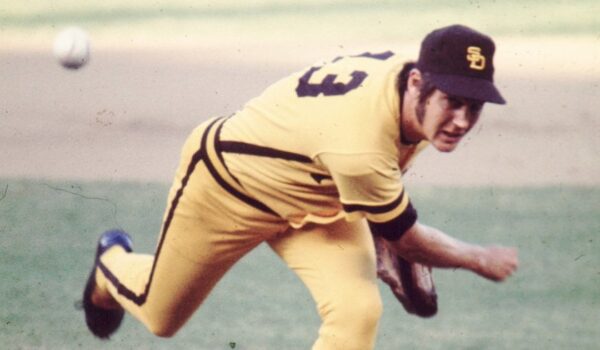
On July 21, pitcher Clay Kirby pitched one of the best games in the history of the San Diego Padres. The New York Mets scored a run in the first off the pitcher on a walk, two stolen bases, and a ground out. Kirby proceeded to take a no-hitter into the bottom of the 8th inning when he was removed in a 1-0 game for a pinch-hitter. Manager Preston Gomez did not allow the pitcher to bat in the bottom of the eighth inning with two men on and nobody out. The 10,000 plus fans in the crowd booed as they were aware of the situation with Kirby’s no-hitter. Cito Gaston struck out as a pinch hitter, making matters worse for the home crowd. The Padres failed to score a run and ended up losing the game 3-0 as reliever Jack Baldshun was tagged for two runs in his one inning of work.
The Padres were eliminated from the playoffs on August 13 as they fell 32.5 games begin the Cincinnati Reds. That was the earliest time the team has ever been eliminated from playoff contention. The team won five consecutive games in September but finished with a 63-99 record to close out the year. The team fared well against the Reds on the year finishing 10-8, and that provided some sort of hope for the coming seasons. The offensive output on the team increased tremendously in 1970, as the team slugged 172 home runs and improved their team batting average 21 points from the season before. Ollie Brown produced a .820 OPS 151 games and 568 games for the Friars. He slugged 23 homers and drove in 89 runs totaling a 3.0 WAR for San Diego.
The team drew 633,439 fans in 1970 in 73 home games at San Diego Stadium. The total was the lowest in the National League and well below what the franchise needed to turn a profit. Rumors of the team possibly relocating to Washington D.C., Toronto, or New Orleans were swirling late in the season as the city of San Diego continued to neglect the Padres. Owner C. Arnholdt Smith and Buzzie Bavasi remained focused on making things work in America’s Finest City.
1971
61-100 (6th place)
Manager- Preston Gomez
All-Star- Nate Colbert (1B)
In the winter, Bavasi continued to trade in an attempt to bring competitive baseball to San Diego. The team acquired Rod Gaspar from the Mets, and they also traded for Enzo Hernandez, Al Severinson, Fred Beene, and Tom Phoebus from the Orioles for Pat Dobson and Tom Dukes. The team also acquired second baseman Don Mason from the Giants for shortstop Steve Huntz which helped bolster the teams’ offensive ability. Bavasi proclaimed early in the spring that the Padres would win at least 15 more games than they did during the 1970 season.
Thirty-four thousand fans came out to watch the Padres in their home opener against the Giants. The team lost to Juan Marichal in the game and could not get anything going offensively to begin the year. Falling flat on their face to start the season, the Padres lost 11 of their first 14 games. The Padres established themselves in the cellar early and were never a factor for the rest of the season, recording the worst major league record by mid-May.
There were several offers for Nate Colbert and Clay Kirby, but Padres’ general manager Buzzie Bavasi resisted the temptation. The team instead traded catcher Chris Cannizzaro, pitcher Al Santorini, and outfielder Al Ferrara. The Padres brought in players like Angel Bravo, Garry Jestadt, Leron Lee, and Fred Norman in hopes of gaining traction on the rest of the NL West. The cash-strapped Padres also obtained money from the Chicago Cubs, which they needed very badly.
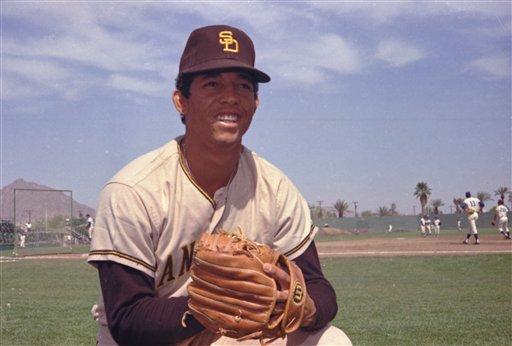
The Padres suffered even more in the standings despite all the recent additions. The team lost seven straight from June 16 through June 22, which led to whispers that Prestin Gomez’s job was in jeopardy. The front office was in turmoil over the lack of support in the community and the failed amount of wins produced in the standings. San Diego presented a 33-57 record at the All-Star break, and fans were not impressed with the team. The lack of star power in the clubhouse drastically affected the team.
On August 10, the club traded for outfielder John Jeter and pitcher Eduardo Acosta by sending pitcher Robert L. Miller to the Pirates. Clay Kirby established himself as the team’s best pitcher throughout the year. On May 9, he threw a franchise-record 161 pitches in a 7-2 victory over the Reds. The pitcher struck out 13 Mets in June in a 4-2 win at Shea Stadium. Kirby also nearly threw two consecutive no-hitters in September. The right-hander lost the first bid with one out in the eighth and five days later retired the first 21 batters before Willie McCovey led off the eighth inning with a homer making the game 2-1. That was the Giants’ only hit of the game as Kirby went the distance.
There are some important things to note this season, as relief pitcher Bob Miller won both games of a doubleheader against the Astros in June. Dave Roberts and Steve Arlin outdueled Tom Seaver and Nolan Ryan in back-to-back games in August in front of a very sparse crowd at San Diego Stadium. By the end of the year, the Padres were starting to bring in a bunch of young players. Pitcher Jay Franklin became the youngest Padres player to appear in a game at the age of 18 years and six months. The team also called up 19-year-old Mike Ivie to catch.
A total of 549,085 fans watched the Padres in 69 home games. Offensive numbers across the board fell as the team suffered to put up runs. Despite the fact the Padres’ pitching staff compiled a 3.22 ERA, the offense only hit 96 homers and recorded a .233 team batting average. Manager Preston Gomez remained with the team, but more production was expected for this young franchise. The team also suffered financially, which left a lot up in the air as the 1972 season approached.
PAGE 2 LINK BELOW
James was born and raised in America’s Finest City. He is a passionate baseball fan with even more passion towards his hometown Padres. Editor-In-Chief of EastVillageTimes.com. Always striving to bring you the highest quality in San Diego Sports News. Original content, with original ideas, that’s our motto. Enjoy.